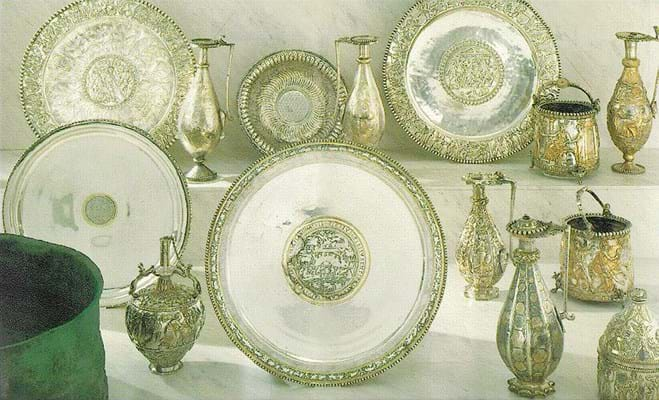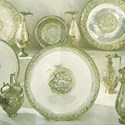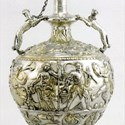After more than 30 years of legal wrangling, the Hungarian government has acquired seven pieces from the Sevso treasure, a spectacular but controversial hoard of 4th or 5th century silver.
Hungarian Prime Minister Viktor Orbán unveiled the treasure on March 26 at a press conference in Budapest describing it as "Hungary's family silver". The government paid €15m for its half of a hoard which totals 14 known pieces and was once valued at more than £50m.
The Sevso treasure takes its name from one of its massive dishes, the Hunting Plate carrying the Latin inscription:Let these, O Sevso, yours for many ages be, small vessels fit to serve your offspring worthily. Perhaps the property of a Roman general now lost to history, it is late Roman silver at its swaggering best.
The collection first appeared on the London art market in murky circumstances in 1980, soon making its way into the hands of a consortium including the retired chairman of Sotheby's, Peter Wilson, the works of art dealer Rainer Zietz and later Spencer Compton, Marquess of Northampton. Since that first appearance it has had a troubled history.
A $10m deal with the Getty Museum in Malibu collapsed over paperwork irregularities, while the attempt to sell for $50m at Sotheby's New York in 1990 led a Manhattan judge to impound the silver after allegations it had been illegally excavated and smuggled out of its country of origin.
Three claimants believed the treasure had been looted from their soil: Yugoslavia (who said the silver had been found on the Serbian-Macedonian border by gypsies), Lebanon (who chose to pursue the long-held claim that it had been found in the Bekaa Valley) and the Hungarian government (who argued it came from the Kőszárhegy region).
After a six-week trial the State Supreme Court in New York found no clear case for taking the collection away from Northampton, but it was something of a pyrrhic victory. Cultural patrimony laws and export regulations had clearly been violated and, his investment in tatters, the Marquess sued his law firm Allen and Overy for damages in relation to advice given during the purchase of the silver. After settling out of court in 1999 for a reported £15m, in September 2006 Northampton exhibited the treasure privately at Bonhams in a move seen as a prelude to a sale by private treaty or by auction at a future date.
New Twist
The latest twist in the story sees the Hungarian government acquire seven pieces of the silver (plus the copper cauldron in which it was buried) from unnamed London owners - thought to represent the British aristocrat and other stakeholders.
Among the pieces changing hands are the 16in (41cm) high Dionysiac Ewer, gilded with the revels of Bacchus, and two of the four vast plates, each up to 2ft 4in (71cm) across and 18lb in weight, including that with the Sevso inscription. Two geometric ewers, a covered casket and a basin complete the deal.
The treasure will be on show in the Hungarian parliament for the next three months and will later join the national collection.
The case for Hungary as the original source of Sevso is increasingly accepted: the Hunting Plate includes the word Pelso, the Roman name for Lake Balaton. The Hungarian authorities believe the hoard was discovered by a young soldier and antiquities enthusiast, Jószef Sümegh, around 1975-76 near the town of Polgárdi. Sümegh was found dead in 1980 - his death the subject of an ongoing criminal investigation.
"Hungary has repossessed the Sevso Treasure," said Prime Minister Orbán, who added he was satisfied with the price. "Getting it back cost €15m, which is one third of the previously estimated repossession expense. The Hungarian party had negotiated well."
It remains to be seen what will happen to the remaining pieces from Sevso - those owned by Northampton and pieces hitherto unknown to scholars. Unusually for a 'hoard', no spoons or medallic coins are known to have accompanied the large tablewares, leading to ongoing speculation that many other smaller pieces (perhaps more than 200) remain at large in Swiss bank vaults.









